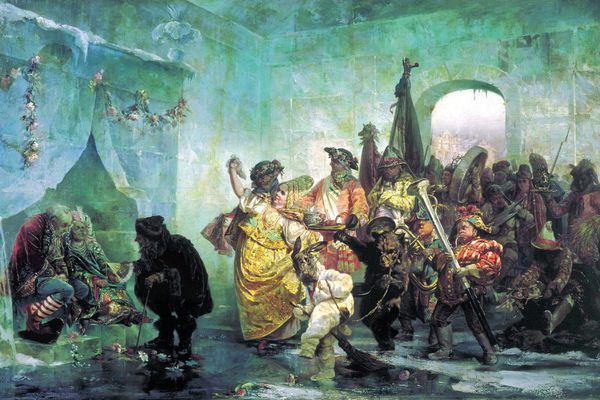Found: The Likely Birthplace of King Henry VII
Think of it as the first Tudor mansion.

Henry VII gave birth to England’s Tudor dynasty—and now archaeologists think they might have found where his mother, Lady Margaret Beaufort, gave birth to him. On the grounds of Pembroke Castle in Wales, excavators have begun uncovering what look like the remains of a large medieval house, and they have reason to believe that England’s lone Welsh king was born in it, The Guardian reports.
While historians have known that Henry VII was born in 1457 on the castle’s grounds, they don’t know precisely where. The working theory has held that the auspicious birth took place in a guard tower along the outer walls. This new excavation, according to James Meek of the Dyfed Archaeological Trust, reveals a more plausible site. The remains bear telltale signs of being a rather “showy” house, more befitting a noble birth.
Architectural features of the uncovered site include a three-foot-thick wall, a trove of slates, tiles still coated in green glaze, and even a curving portion of staircase. In all, the site is about the size of two tennis courts. It has been known that there was a structure there since the 1930s, and further evidence of the building’s footprint comes from what are called parch marks, or areas of thinner plant growth over buried masonry. Such marks have been appearing throughout the United Kingdom this summer due to dry conditions. The evidence uncovered so far suggests that the building is indeed from the late medieval period, strengthening its possible association with Henry VII’s birth.*

Confirming the date would also challenge conventional wisdom regarding how castle grounds functioned during the period. Buildings within a castle’s outer walls, Meek said, are generally believed to have been smaller and made of wood, suggesting a lower status when compared with the pomp and intrigue of the inner sanctum. A large stone building there, as the new find suggests, might have seemed out of place. Mark Merrony, an archaeologist and fellow at the University of Oxford, who has visited the excavation site, suspects that stones from the building were repurposed for later construction, causing it to disappear.
Henry VII reigned for 23 years, beginning 118 years of Tudor rule, with his defeat of Richard III during the Wars of the Roses. Thanks to Shakespeare, Richard is probably better known (if also more maligned, perhaps unfairly). And he was also the subject of an unexpected bit of royal archaeology—his remains were discovered in 2012 under a Leicester parking lot.
* Correction: This story has been updated to state that the building was documented in the 1930s, and that its late medieval date has yet to be confirmed.











Follow us on Twitter to get the latest on the world's hidden wonders.
Like us on Facebook to get the latest on the world's hidden wonders.
Follow us on Twitter Like us on Facebook